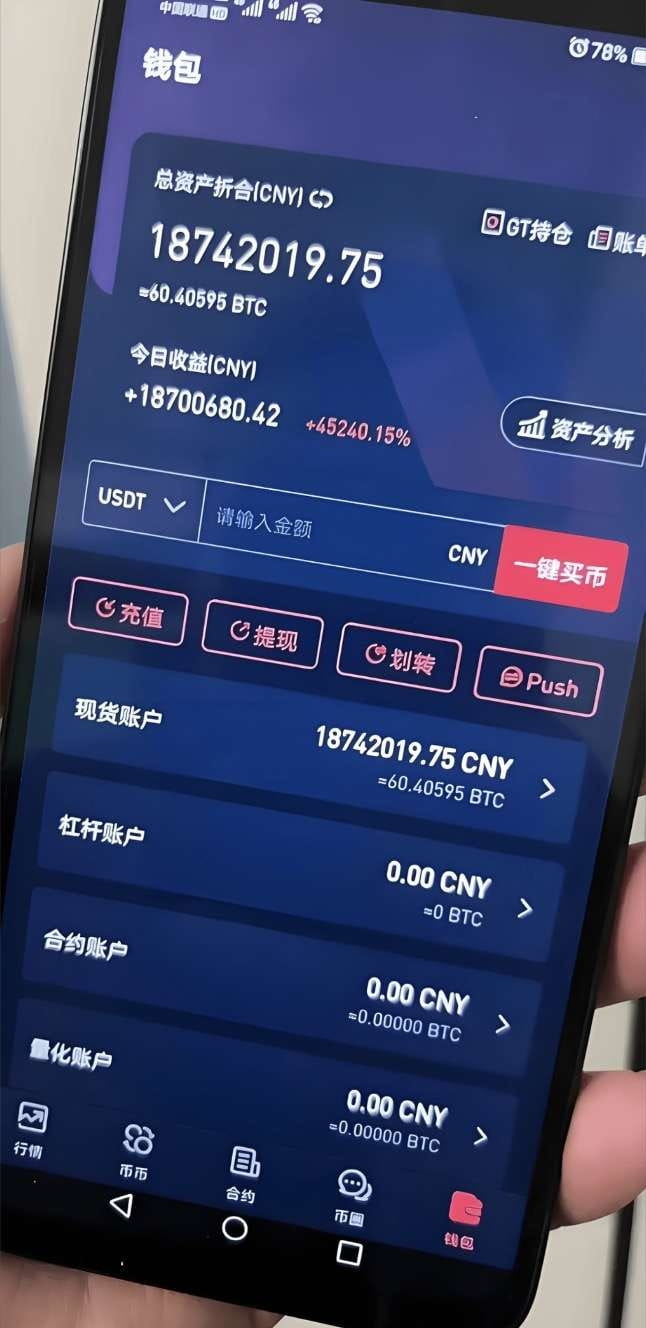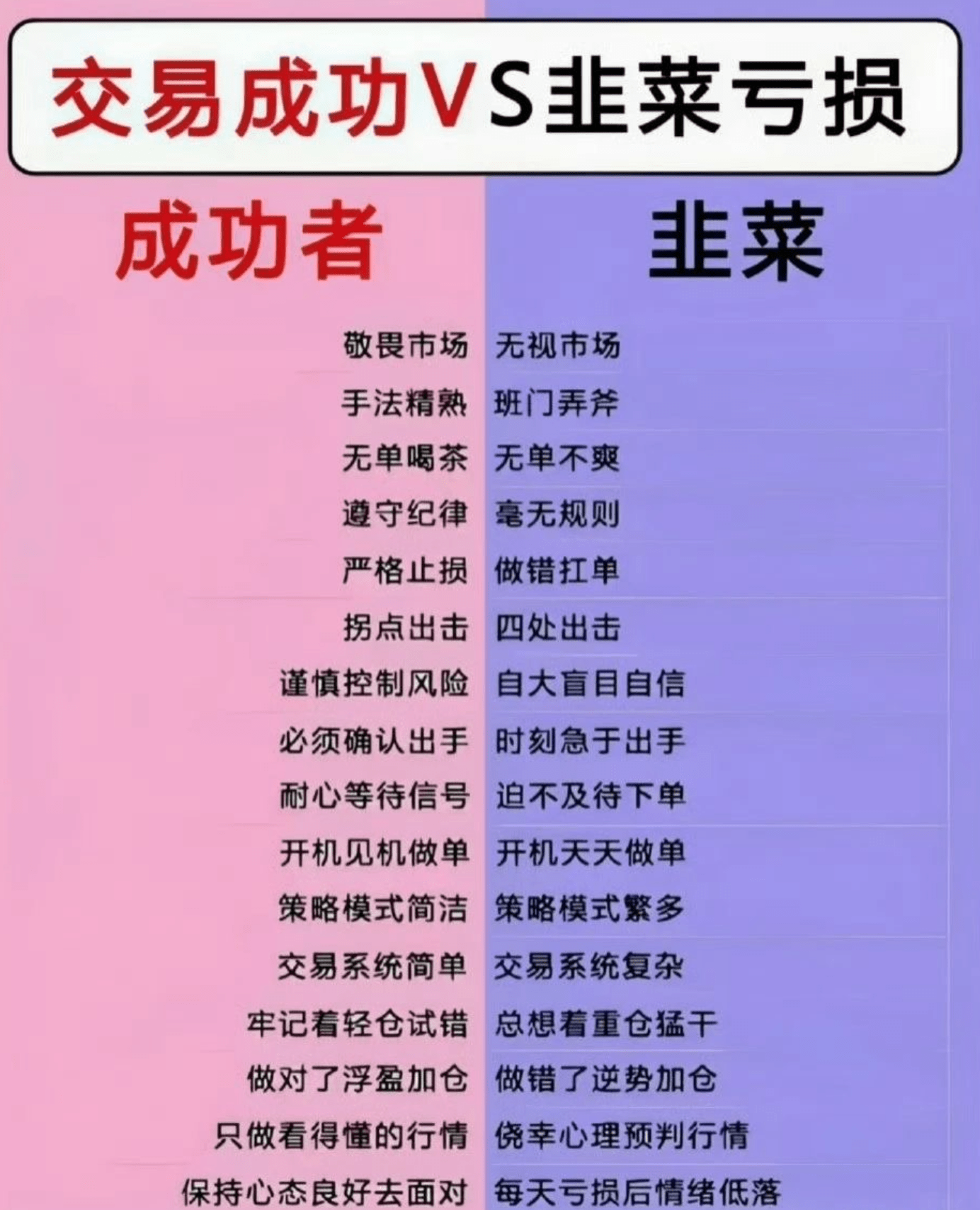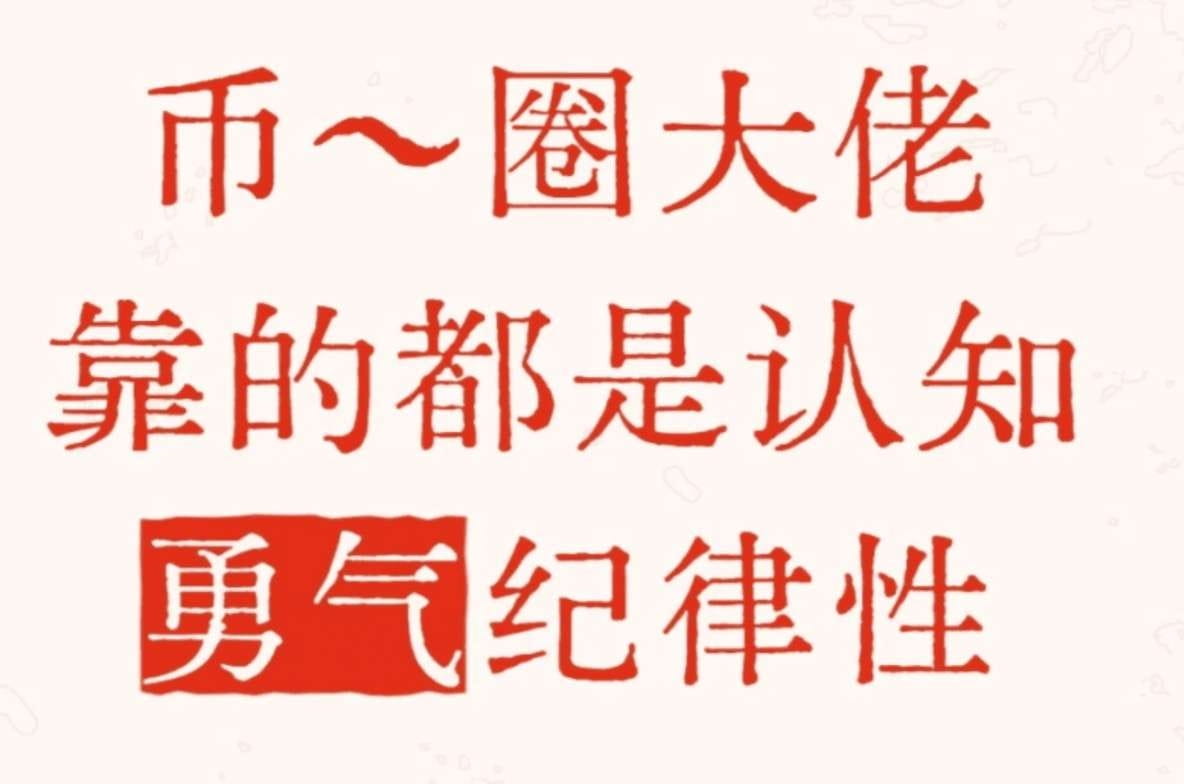What I said today is all true! I have been speculating in coins for 10 years, and I have lost money for 3 consecutive years in the first 3 years, and the principal of 3 million was lost to 400,000! It's really too painful! My husband and children don't support or understand! Later, I resigned and put all my thoughts into it! I am busy exploring and summarizing every day! Now I can finally stabilize compound interest, and now my account has earned back more than 40 million!
Today I will share the 11 super coin-speculating iron rules that I have summarized with you, hoping to inspire the newcomers in the currency circle to take a few detours! Grow on the shoulders of giants! If you learn it, you can also double it!

A big reveal of averaging down in the currency circle: 90% of people are averaging down blindly, and old drivers will take you to calculate the real cost About the 4 cruel truths of investment, reading it can reduce losses
Averaging down is not simply 'averaging the price'
For example, if you bought 10,000 worth of coins for 10 yuan, and then bought another 10,000 worth when it dropped to 5 yuan. Do you think the cost is 7.5 yuan? Wrong! The actual cost is 6.67 yuan, because the second purchase had a larger quantity, which lowered the average price.
Key point: The cost after averaging down is lower than you think, but don't feel 'safe' because of this, and you still have to stop the loss.
Earn 1% every day, can it turn 10 times a year?
With a principal of 100,000, earning 1% every day, compound interest can turn into 1.32 million in 250 days a year.
But the reality is: very few people can stably earn 1% every day. Most people earn 5% today and lose 10% tomorrow, and end up working for nothing. Self-discipline is more important than strategy.
Can you make money with a 60% success rate?
Suppose you trade 100 times:
60 wins, each time earning 10% → total earnings 60%
40 losses, each time losing 10% → total loss 40%
Finally net profit 20%
The problem is: most people run away after making a little money, and hold on to losses, so even if the success rate is high, it's useless.
From 10,000 to 100 million? Theoretically feasible, but don't dream about it in reality
Earn 10% each time, and you can achieve it with 97 consecutive wins.
But the reality is:
Be complacent with a 10% profit, want to earn more, and lose 20% in the next round.
After continuous profits, the mentality expands, and finally all returns to zero.
Investing is not a math problem, but a test of human nature.
Personal opinion: The survival rules of the investment market - recognize the truth and stick to the bottom line
About averaging down: low cost ≠ safety
Averaging down can indeed reduce the average cost, but this is just a math game. Many people mistakenly believe that 'lower cost = safer' after averaging down, but instead relax their vigilance, leading to deeper and deeper sets. My principle is: averaging down must set a clear stop-loss position, otherwise it is gambling.
About compound interest: the ideal is very full, the reality is very skinny
1% daily compound interest sounds tempting, but in reality, market fluctuations are intense, and emotional interference is severe. Few people can consistently execute. My advice is: abandon unrealistic fantasies, first achieve 'small profits and small losses, occasional big wins', and long-term accumulation is the right way.
About win rate: A 60% success rate can also lose money
Even if the win rate exceeds half, the final result is still a loss if the profit-loss ratio is unreasonable. My strategy is: strict stop-loss, let the profits run, so that mathematical probability can truly stand on my side.
About getting rich: 10,000 to 100 million? Don't be misled by illusions
Theoretically feasible, but in reality 99% of people will lose control in the middle - either take profit too early, or increase losses, and finally get nothing. My bottom line is: not to pursue getting rich overnight, but to earn money that I understand, and keeping the principal is always the first priority.
It's not difficult to make money in the crypto world! Watch me rely on iron rules + technology to harvest big profits in a single day
In the currency circle, some people always say that it is difficult to make money, but for those who understand technology and abide by iron rules, profitability is a matter of course. Taking today's BTCUSDT contract operation as an example, relying on 3 iron rules + basic technology, you can easily eat big meat. Let's break it down for everyone.
1. Iron rules are the foundation: position size, stop loss, and take profit are indispensable
I have always emphasized to my students that when doing contracts, you must abide by the 'iron triangle': use the full position to look at the trend (dare to go up only when the trend is clear), the stop-loss line must be set (control single loss), and the take-profit point must be ruthless (let the profit run). The short order opened at 01:32 this morning, with an opening price of 113601. The reason why I dared to use the full position was because I judged that there was a short-term callback demand, and I also set a good stop-loss. As a result, the take-profit was triggered at 05:17. Although there was a small profit, the profit was locked in time.
2. Technical assistance: Recognize moving averages + volume, and grasp the buying and selling points
When playing contracts, moving averages and volume are my 'left and right arms'. The long order opened at 5:17, with an opening price of 114080.5. At that time, the 30-minute moving average was in a bullish arrangement, and the volume increased simultaneously, indicating that funds were entering the market. I decisively went long, and as expected, I closed the position at 06:47, with a profit of 20274U. The long order at 8:28 was even more amazing, with an opening price of 115277.6. I also saw the 15-minute moving average turning upwards, and the volume suddenly increased. After entering the market, I closed the position at 12:00 and earned another 15356U.
3. Mental Support: Not greedy, not afraid, execute according to the rules
The crypto world is volatile, and it's easy to operate randomly when your mentality collapses. These three orders today, whether profitable or a small loss (short order lost 4792U), are strictly according to the rules. Don't be greedy when you make money, run when you reach the take-profit point; don't be afraid when you lose money, cut when the stop-loss is triggered, and never gamble on the market by carrying orders.
In conclusion:
Averaging down must calculate the real cost, but don't rely on it to 'get out of the trap'.
Compound interest is beautiful, but first achieve 'stable profit' before talking about it.
Taking profit and stopping loss are more important than 'guessing the rise and fall'.
Don't fantasize about getting rich overnight, being able to live in the market is the winner.
Remember: The secret to making money is not 'being smarter', but 'being more restrained'.
Why can't many people make money in the currency circle?
It's not a lack of effort, it's a lack of understanding: trading is actually just one sentence
"Don't make small money, don't lose big money."
Sounds simple, but it's too difficult to do!
Here's an example you may have experienced: You opened a long position with 20,000 U, and as a result, it rose to 21,000. You were afraid of a callback, so you took profit and made a 5% profit, feeling very happy.
But the market directly rushed to 25,000 later! You made 5%, but you stepped on 50%, are you angry?
You tell yourself: 'Next time I have to hold on and make big money!'
So you opened an order at 20,000, and when it rose to 21,000, you held on tightly, but the market reversed and fell, smashing through 20,000 all the way to 19,500. You couldn't hold on and stopped the loss, losing a wave for nothing...
Does it sound familiar? This is the vicious cycle that most people can't get out of.
So is there any way to make money from both big and small market conditions?
Unfortunately: no!
You must make a choice in trading:
✅ Either make small money and guarantee stability
✅ Either only grab big markets and not be tempted by short-term gains
I choose the latter, not to make small money, but to wait for big opportunities!
Why?
Because true wealth is not about frequent entry and exit, it is about grasping a big market + holding on to profits!
Earn 200% in one market, hold on to it, and earn another 200% next time. This is the secret of compound interest doubling.
But you make a profit and then lose, earning 200% and then spitting it back out. Why bother so hard? Many people have never touched the right path in their lives
If you are now beginning to realize that: it's not that more trading can make more money, it's not that earning a few points can make you rich, but that
You have to learn to: wait, hold, be ruthless!
Wait for the right position, hold on to the profits, and dare to take action at the critical moment!
This requires: a stable enough mentality! Enough patience! Enough courage! Not afraid of missing the market! Not being swayed by short-term fluctuations!
Are you willing to choose to be empty when everyone is frantically grabbing short-term? Dare to heavily kill when everyone is cutting meat and leaving the market? Only if you can do these things are you worthy of the opportunity for the next wave of financial freedom!
Trading is not about getting rich by luck, but about surviving by understanding, rhythm and cognition.
Those who play blindly are always losing money; and if you are already 'on the road', at least you have already won half!

Spot trading makes money? Simple truth! A 'stupid' method in the crypto world that puts stability first, but can have the last laugh
Everyone says that it is quick to make money in the currency circle, but quick money is often accompanied by high risks (do you know about liquidation and zeroing?)
In fact, spot trading (buying low and selling high) is the most basic and 'stable' way to play in the currency circle. The logic is so simple that even elementary school students understand it, but if you do it well, the income can be steadily pocketed.
1. The underlying logic? It's just the four words 'buy low, sell high'!
Example: You spend 1 yuan to buy an apple (token), and sell it for 1.5 yuan when it rises, making a net profit of 50 cents. It's that simple!
Core advantage: No leverage, no fear of liquidation! If the price falls? At most, it is a temporary 'floating loss', and the thing is still in your hands, and it will not instantly return to zero. This is the safety cushion for survival in the currency circle.
2. Why do many people lose? It's not the wrong method, it's the collapsed mentality!
Losing money in spot trading is often not because you chose the wrong coin, but because you stepped on the wrong rhythm and were led by the nose by emotions:
Upon hearing 'The bull is coming!' you get carried away and take over at a high position. (Becoming a 'caveman')
Panic selling at the slightest dip, only to see it rebound right after. (Perfect 'buy high, sell low')
Staring at the market all day long, wanting to run when it goes up a bit, and feeling anxious when it goes down a bit. (Turning 'investment' into 'torture')
To put it bluntly, it's not that spot trading doesn't make money, it's that too many people have turned 'buy low, sell high' into 'chasing highs and killing lows', defeating themselves.
3. How do experts play? They earn money from 'big trends'!
Ordinary people earn a little bit from small fluctuations, but experts keep an eye on the entire bull and bear cycle:
Mid/late stage of the bear market: Like saving money, buy mainstream coins (BTC, ETH) regularly (fixed investment), and then patiently wait for the bull market to come and double or even more.
Early stage of the bull market: Ambush potential altcoins (small coins) in advance, and wait for the wind to come (such as AI, Meme heat), and sell them in batches after they rise 5 or 10 times to pocket them.
Core: Don't rely on fast hands, rely on accurate vision + being able to wait! They earn money from understanding the market's big cycles and the patience to 'hold on'.
4. Novice entry? Remember these points and take fewer detours!
Choose 'hard currency' at the start: Mainstream currencies such as BTC and ETH are the first choice. Large market, relatively resistant to decline, and not easily manipulated by small dealers are good choices for practice.
Never 'go all in': Buy in batches, sell in batches! Always leave some bullets (cash) so you have room to adjust when the market changes, and your mentality will be more stable.
"Holding on" is the ultimate test: The essence of spot trading lies in laying out trends, not watching the market every day. The more frequent the operation, the easier it is to be biased by market sentiment, and it is easier to lose money. Patience is the most valuable quality for spot players.
Summary in one sentence:
Making money with spot trading is essentially buying low and selling high. Want to make big money? The key lies in three points: the vision to deploy in advance + the patience to hold on + the wisdom to understand the cycle.
Don't dislike the 'slow' of spot trading! Contracts can make you rich overnight (or zero out overnight), playing with your heart.
Spot trading allows you to avoid liquidation, not panic, accumulate wealth and confidence steadily. In the crypto world, the Shura field, 'slow' is often the magic weapon to live the longest and win the most stable. Steady and steady is the king!

A 10-year trader, the deepest understanding is actually 'waiting' After trading for more than seven years, if someone asks me what I am best at now, I will not hesitate to say that I am best at 'waiting'.
Some people may wonder: shouldn't a trader's housekeeping skill be accurate market analysis? But in reality, market analysis accounts for a negligible proportion of the entire trading work. A senior trader spends most of his time 'waiting'.
In the daily market fluctuations, what are we waiting for? To put it bluntly, we are waiting for the moment when the trading advantage reaches its peak and flashes in the market. In the ups and downs of the market, some signals will indicate that buyers are taking the upper hand in the market at this moment, while some signals will imply that sellers have more advantages.
When the market signals that buyers are dominant are significantly more than the signals that sellers are dominant, the market is likely to tilt towards buyers (and vice versa). This is the best time for us to enter the market. The sum of these market advantages that we are waiting for is called 'trading strategy' in trader terminology.
A trading strategy generally consists of a combination of conditions that the market must meet. Only when the market conditions that fit the trading strategy appear, our probability of winning in the market will reach the highest.
In some people's minds, trading requires constant analysis of market conditions, predicting the next market trend at all times, and then immediately participating in it. But I think this is a wrong way to understand the market. The market itself is full of randomness, and in most cases, market fluctuations have no rules to follow. What we need to do is not to try every means to win in every market situation, but to decisively enter the market when the probability of winning is high.
If trading is compared to hunting, what we have to do is not to predict the movement route of the prey (the movement route of the prey is also difficult to predict), but to decisively shoot when the prey enters the range.
When you have been on the road of trading for a long enough time, you will find that the essence of trading boils down to 'waiting'. Learn to avoid chaotic markets and only enter the market when you are most confident, and your trading ability will naturally move to a new height.